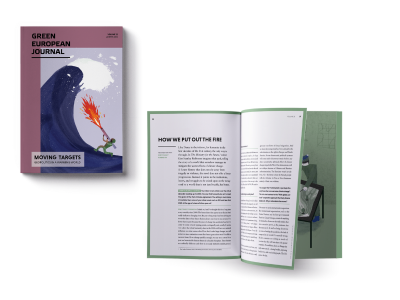As part of this edition’s “Rising Tides, Rising Tensions” series on the front lines of the ecological crisis around the world, we hear from writers about the geopolitics of climate change in Brazil, Morocco, Nigeria, Serbia, and Turkey. Vidal Dias Da Mota Junior evaluates the impact of deforestation in Brazil against their international climate obligations.
The environmental losses Brazil has experienced since 2019 are frightening. The spring of 2021 was marked by the biggest water crisis in 91 years. Hydroelectric reservoirs are at near-record lows, threatening electricity supply, and agriculture in the Centro-Sul region is suffering from a severe drought. Land grabbers, miners, and other traditional enemies of Brazil’s natural heritage are burning, deforesting, and invading Indigenous territories and environmental preservation areas. The Brazilian state has failed to react. As a result, in 2019 and 2020 alone, 9216 square kilometres were cleared in the Amazon, and the devastation of the Amazon, Cerrado, Caatinga, and Pantanal regions has reached record levels.

Negligence and half-hearted firefighting efforts caused deforestation alerts in the Amazon region in 2019 and 2020 to rise to levels 82 per cent higher than the average number registered in 2016, 2017, and 2018, as shown by data from Brazil’s National Institute for Space Research. So far this year, at least 661 square kilometres of forest have been cut down in the Cerrado, a region recognised as the “water tank” of Brazil. In the Pantanal, an area larger than Belgium was destroyed by forest fires. In addition to the destruction of flora, an estimated 10 million wild animals died in forest fires, with 4.6 billion more suffering from their effects.
Land grabbers, miners, and other traditional enemies of Brazil’s natural heritage are burning, deforesting, and invading Indigenous territories and environmental preservation areas.
According to the Climate Observatory’s Greenhouse Gas Emission and Removal Estimating System (SEEG Brasil), even with the pandemic and economic recession, Brazil’s greenhouse gas emissions increased by 9.5 per cent in 2020. The global trend was a drop of almost 7 per cent. The current Brazilian government’s environmental policy does nothing to contribute to the goal of limiting global warming to 1.5 degrees above pre-industrial levels by 2030. On the contrary, according to a report released by the global organisation Climate Transparency, that brings together NGOs from 16 countries, its current climate plans contribute to 3 degrees of warming – this is double the limit set by the Paris Agreement, signed in 2015. This poor record has led to Brazil’s diplomatic isolation.
Nevertheless, states and municipalities in Brazil are beginning to react to the dismantling of environmental policies by the central government. State governors are trying to fill the void left by President Jair Bolsonaro and to show the world that other actors in Brazilian society are committed to the climate agenda. In August 2021, 25 heads of state governments met the president of COP26, Alok Sharma. Earlier in the summer, they had met with US climate envoy John Kerry. At least 10 state representatives were at COP26 in Glasgow.
The actions that Brazil needs to take are clear and proven: combating fires, deforestation, and mining; strengthening its environmental agencies; providing resources for social development and the reforestation of devastated areas; and ensuring respect for Indigenous and traditional populations. Without these, Brazilian diplomatic isolation may long continue.

